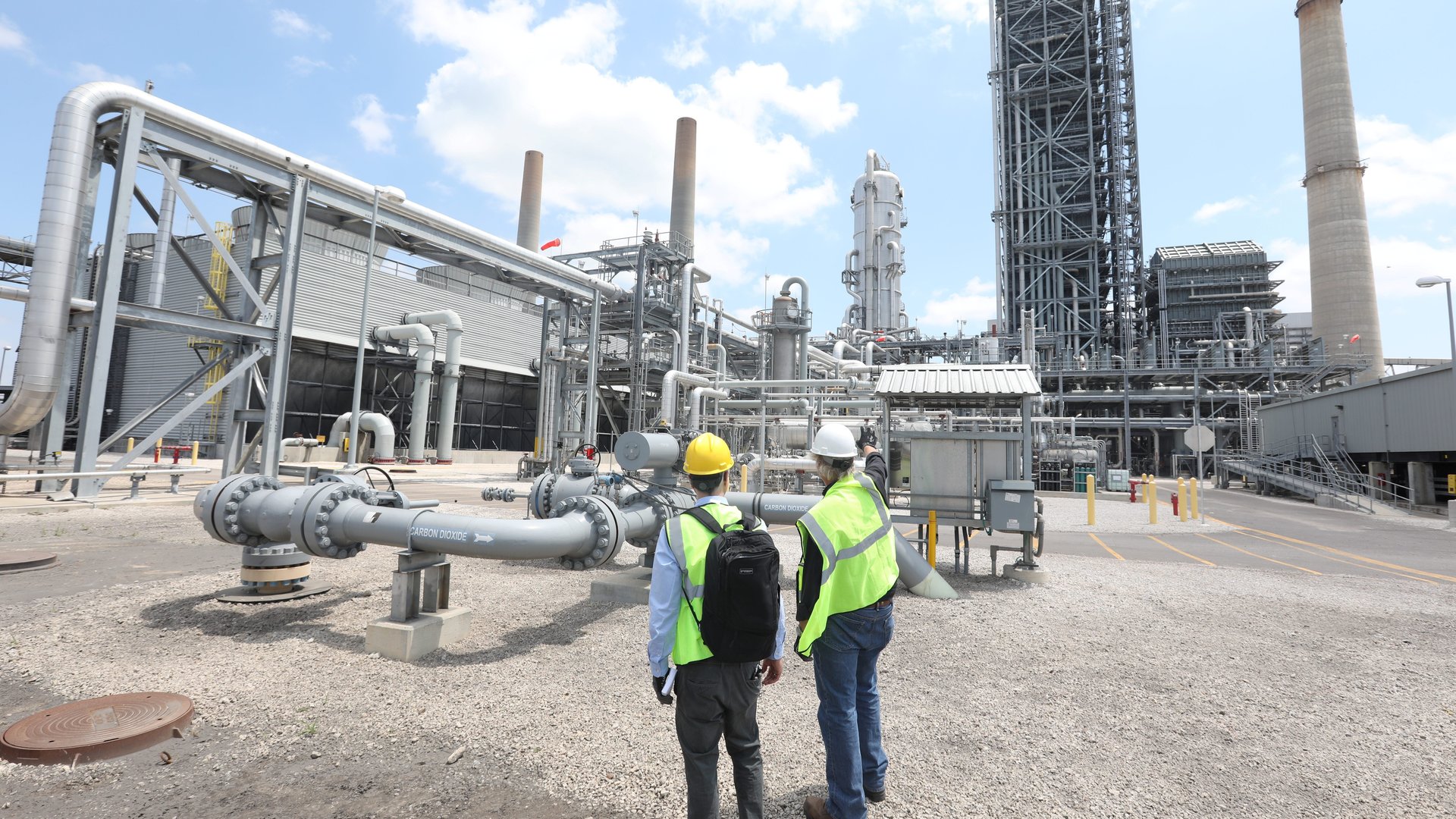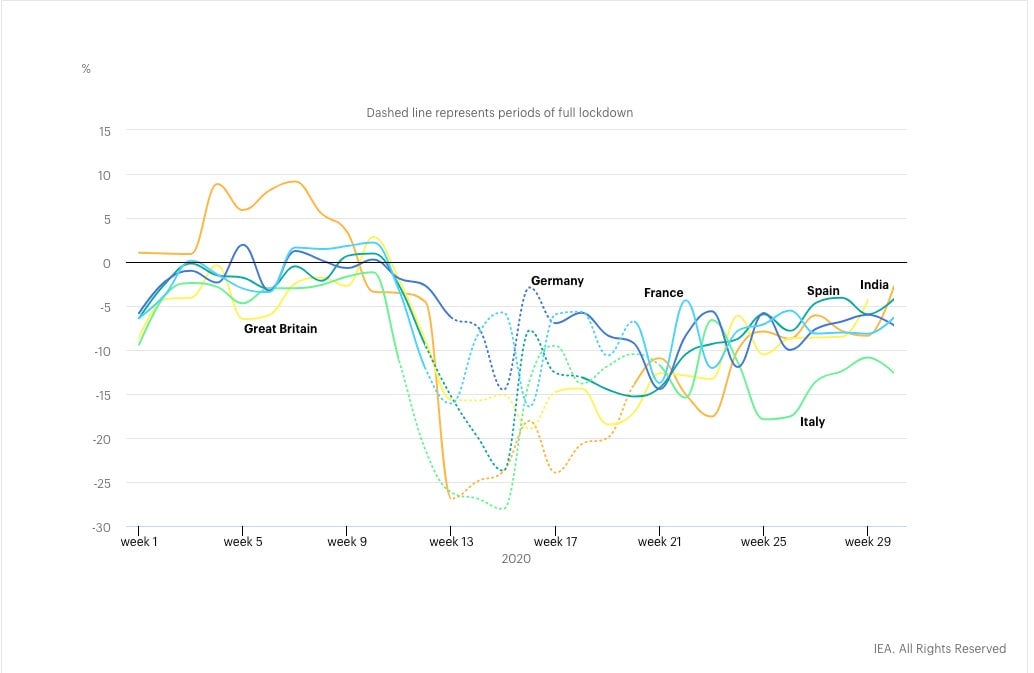The Race to Zero Emissions: How to fix a climate Catch-22

When the pandemic caused the global oil market to crash, it claimed an unusual victim: the only carbon capture system on a coal-fired power plant in the US, one of only two worldwide.
The system, known as Petra Nova, was designed to vacuum CO2 out of the emissions from a coal plant near Houston so it could be buried underground. It was supposed to cement carbon capture as a cost-effective climate solution, after an earlier attempt in Mississippi turned into an infamous $8 billion boondoggle.
Instead, Petra Nova has been shuttered since May. And its closure reveals the weird market dynamics that could threaten the viability of similar systems still in the works, including one in North Dakota and another in New Mexico.
Technologically speaking, the system was a success: It managed to capture nearly all of the CO2 that passed through. But because of outages and the fact that it was only attached to one part of the plant, it ended up capturing only about 7% of the plant’s emissions over three years.
Then the pandemic-driven oil crash illuminated an even bigger problem: The fundamental business model behind the system is broken.
That’s because the system relies on a counterintuitive approach known as “enhanced oil recovery.” In short, captured CO2 is sold to oil companies to help squeeze out more barrels. The approach does produce oil that is, on net, less carbon intensive than normal. But in order to operate, Petra Nova required an oil price of at least $75 per barrel—higher than even before the pandemic, and after the resulting oil market crash, almost certainly higher than it will reach in the foreseeable future.
It’s a climate Catch-22: a promising technology to slash carbon emissions from coal-fired power plants that requires both high oil prices and a lot of coal consumption.
✦ But that doesn’t mean carbon capture and storage is completely off the table. You can read more about how it might still come into play by signing up for a Quartz membership. ✦

Here’s what happened over the past week that helped or harmed the world’s chances of cutting greenhouse-gas emissions to zero:
⬇️ Decreases emissions
1️⃣ Germany generated almost half its electricity from wind and solar in 2020. Globally, 10% of global electricity generation came from those sources in the first half of the year, double the rate in 2015.
2️⃣ Seven of the largest oil and gas firms have written off $87 billion in fossil fuel assets so far in 2020. With demand for oil severely depressed, many reserves are unprofitable to extract.
3️⃣ Siemens Energy, a wind turbine manufacturer, secured a €3 billion ($3.56 billion) credit line tied to sustainability metrics. Financing costs depend on meeting environmental, social, and corporate governance criteria including GHG emissions.
0️⃣ Net-zero (for now)
1️⃣ Phillips 66 says it will convert its San Francisco crude oil refinery into the world’s largest renewable fuel plant for cooking oil, fats, and greases. It expects to cut the plant’s greenhouse gas emissions by 50%.
2️⃣ Big investors such as pension fund Calpers and asset firm Schroders are calling on companies to make their climate risks public. The move comes after BP said it will include these risks in its own public filings.
3️⃣ The Trump administration said it would open one of America’s largest wildlife refuges to oil and gas drilling. It would be the first time the 1.56-million-acre Arctic National Wildlife Refuge would be open for fossil fuel extraction in the six decades since Congress designated it.
Coronavirus curveball
After a steep decline during the pandemic, electricity demand has recovered in the EU, reports the International Energy Agency. It was down 5% this July compared to the same period in 2019, with the exception of Italy. Yet the power mix in the EU now favors renewables: Expensive coal generation has been curtailed, and renewables enjoyed priority on the grid.

🔼 Increases emissions
1️⃣ India’s flood of new solar installations has slowed to a trickle, falling 81% to 205 MW in the second quarter. The coronavirus pandemic crippled the labor supply for large projects.
2️⃣ After Germany shut down nuclear plants in the wake of Japan’s Fukushima disaster, emissions rose as coal filled the gap. Researchers estimate more than 1,100 people have died from added air pollution and 36 million extra tons of carbon dioxide per year.
3️⃣ The Trump administration will no longer require oil and gas companies and pipeline operators to monitor greenhouse gas leaks such as methane. The move overturns Obama-era rules preventing millions of tons of GHG from entering the atmosphere.
4️⃣ Scientists in the journal Communications Earth and Environment say Greenland’s ice sheets are now past the point of no return. Even if we were to stop warming today, snowfall cannot keep up with the pace of melting.
Additional reporting by Michael Coren.
More for Quartz members
Maybe the climate movement could take some pointers from Hong Kong. The fight for the region has become the world’s fight, and a key factor has been the protest movement’s international lobbying network. Grassroots diplomacy and unofficial statecraft has leveraged the momentum of the protests into tangible political influence worldwide. Read about how the battle over Hong Kong’s freedoms went global in Quartz’s latest field guide.
Stats to remember
As of Aug. 15, the concentration of carbon dioxide in the atmosphere was 412.54 ppm. A year ago, the level was 410.35 ppm.
Have a great week ahead. Please send feedback and tips to [email protected] and [email protected].